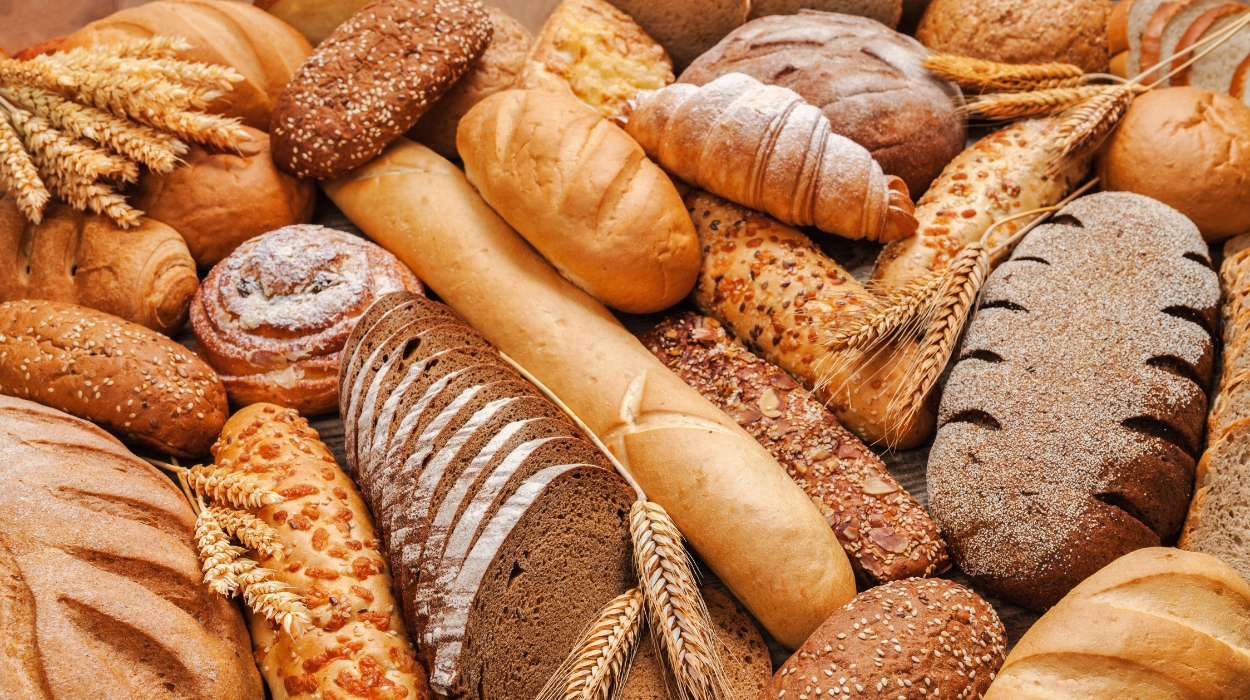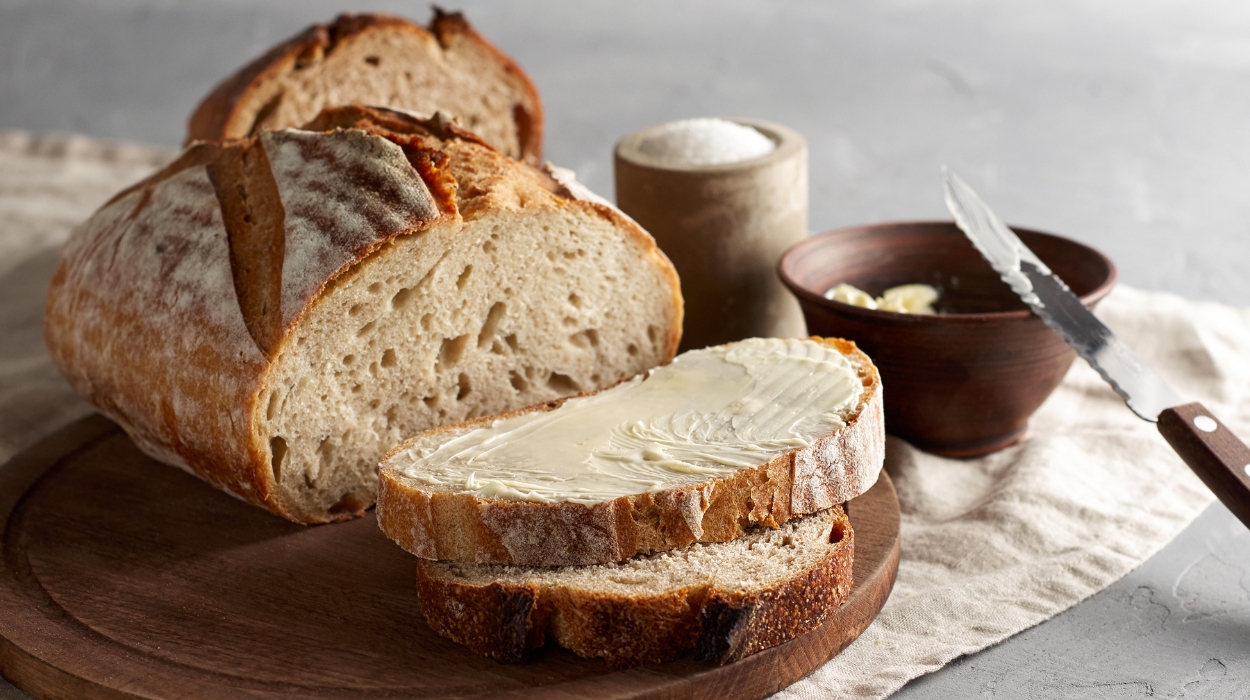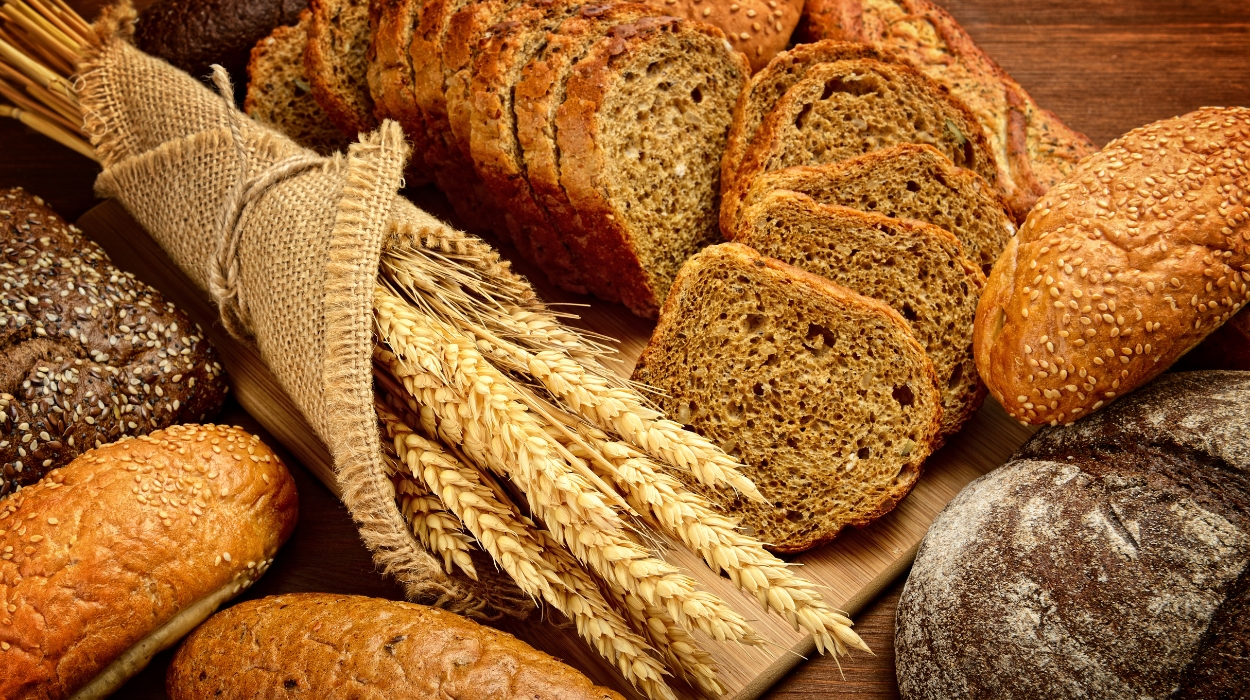 Expert's opinion
Expert's opinion
Expert's opinion
The article is a subjective view on this topic written by writers specializing in medical writing.
It may reflect on a personal journey surrounding struggles with an illness or medical condition, involve product comparisons, diet considerations, or other health-related opinions.
Although the view is entirely that of the writer, it is based on academic experiences and scientific research they have conducted; it is fact-checked by a team of degreed medical experts, and validated by sources attached to the article.
The numbers in parenthesis (1,2,3) will take you to clickable links to related scientific papers.
Best Bread For Weight Loss: 7 Healthiest Types Of Bread To Choose 2024

In a world that has demonized carbohydrates as evil things that make us put on weight, it may be surprising to know that eating bread can be part of a healthy weight management plan.
Bread can help us feel full for long periods and control hunger cravings. A healthy balance of carbohydrates and fiber is essential for a balanced diet, so it’s important to choose the right kind of bread that will support your journey to weight loss.
So is there the best bread to lose weight? Some types of bread are healthier than others, so while you may still enjoy the occasional slice of white bread, it’s important to focus on other more nutritious options, such as buckwheat. Whole grain bread and whole wheat flour varieties are great alternatives as they contain higher fiber content and usually fewer calories than their refined counterparts.
Best Bread To Eat For Weight Loss
Some of the healthiest gluten-containing bread options for weight loss include:
- Sourdough bread.
- Ezekiel bread.
- Rye bread.
Regarding gluten-free bread choices, some of the most beneficial options include:
- Buckwheat bread.
- Millet bread.
- Quinoa bread.
At most supermarkets, you can also find:
- Specially formulated low-calorie bread.
The Healthiest Bread For Weight Loss
Which bread is good for weight loss? Choosing the right loaf is important. As mentioned earlier, refined white bread has been associated with weight gain, whereas whole-grain loaves of bread are more likely to be associated with maintaining a healthy weight range. So, the first rule when shopping for bread is to avoid anything made with refined white flour.
Many different bread choices are available these days, both gluten-containing and gluten-free. Some of the alternative flours used in breadmaking have unique nutritional profiles that could benefit a balanced weight management plan, along with other dietary interventions such as fat-burning supplements.
Gluten-Containing Breads

Some of the healthiest gluten-containing bread options for weight loss include sourdough bread, Ezekiel bread, and rye bread.
Sourdough bread is made using a natural yeast starter, which means it has a lower glycemic index than other types of bread, making it less likely to cause spikes in blood sugar levels. Sourdough bread may be suitable for weight loss as it contains microbes that may improve the status of the gut microbiome,[1] which is linked to improved weight management.
Ezekiel bread is made from sprouted grains and legumes,[2] which makes it a protein-rich and nutrient-dense option. The sprouting process releases vitamins, minerals, and proteins bound up in the grain’s cell walls, making them more bioavailable to the body. Sprouted grains also contain higher levels of antioxidants and beneficial enzymes, which can help support digestion and increase the absorption of nutrients from other sources.
Rye bread is known to have a lower glycemic index than white bread, which means it may be a better option for managing blood sugar levels.[3] Studies have shown rye foods to have a beneficial effect on insulin metabolism and a possible correlation with diabetes prevention. Rye is also associated with lower inflammatory biomarkers than its refined counterpart and may lower cholesterol levels.
Gluten-Free Breads
Regarding gluten-free bread options, some of the healthiest options include buckwheat bread, millet bread, and quinoa bread.
Buckwheat bread is high in protein, fiber, and essential nutrients like magnesium and potassium. This type of bread also contains a compound called rutin,[4] which has been linked to a lower risk of heart disease, reduced body weight and adipose tissue mass, and improved glucose metabolism.
Millet bread is a low-calorie, lectin-free option rich in antioxidants and minerals[5] like iron and phosphorus. It also contains bioactive compounds that may prevent blood sugar spikes, lower cholesterol, decrease high blood pressure, and regulate the gut microbiome.
Quinoa bread is another gluten-free option high in protein, fiber, and essential amino acids[6] necessary for muscle repair and growth. Quinoa bread is an excellent option for those looking for an easy-to-digest source of complex carbohydrates and a higher protein content bread to help regulate blood sugar.
Low-Calorie Bread Options
Many supermarkets now stock bread that is designed with weight management in mind. You can now buy specially formulated gluten-containing and gluten-free bread with fewer calories per slice. If losing weight is your ultimate goal, this might be the best bread to eat.
Is Bread Good For Weight Loss?

Yes, bread can be good for weight loss if it is part of an overall healthy diet plan.
If you are trying to lose weight and usually eat white bread, substituting a few slices of whole wheat or whole grain for refined white bread can reduce the number of processed carbohydrates you consume daily, which studies have shown may help with weight loss.[7] The body needs an array of nutrients to function optimally. Therefore, it is important to consume a variety of grains rather than cutting them altogether out of your diet completely.
Benefits Of Healthy Bread For Losing Weight
Some studies have suggested that white bread may be linked to an increased risk of obesity,[8] but not whole-grain bread. People who ate whole grains, such as whole wheat bread, had lower abdominal fat levels[9] than those who ate white bread. This lowered abdominal fat may be due to the dietary fiber content of whole-grain bread and its lower glycemic index.
Diets high in dietary fiber and calorically restricted have been positively associated with weight loss.[10] Whole grains, including whole wheat bread and multigrain bread, are key sources of dietary fiber. Eating a daily piece or two of whole-grain bread can help reduce cravings for unhealthy foods. The fiber content in the bread helps you stay fuller longer, so you’re less likely to snack between meals.
This can lead to a reduction in overall calorie intake, which can help you to lose belly fat.
Bread is also a good source of complex carbohydrates, boosting energy throughout the day. This can help you maintain your energy levels during your workout,[11] which can help you burn more calories overall. It has been suggested that complex carbohydrates in a diet should make up to half of our daily calories.[12]
Most types of bread are rich in complex carbohydrates and also contain essential vitamins and minerals, which can help you meet your daily nutritional requirements. Whole grains contain vitamins B6, niacin, thiamin, riboflavin, folate, and minerals like zinc, calcium, magnesium, and iron. Maintaining your levels of these essential nutrients[13] can help with weight loss by ensuring your body is working at its optimum level.
How To Choose The Healthiest Bread For Weight Loss?
The first step to selecting the healthiest bread is knowing the most nutritious bread for you. If you need to lose weight, there are loaves of bread made with low-calorie flour, such as rice flour, corn starch, and tapioca flour. If you need to increase your fiber intake, then you are better off with a high-fiber loaf of bread, which may be higher in calories. If you need help with digestion or have gut issues, sprouted bread might be a healthy choice.
However, there are some rules to follow when selecting a healthy loaf.
- Check the label or check with the staff at the bakery to ensure that your bread has been made with 100% whole or sprouted grains.
- Look at the nutrition information label to ensure it is high in fiber and protein.
- Check the ingredients list for added sugar, oils, or butter. These can add a lot of extra calories and fat to your bread.
The Bottom Line
Including bread in your daily diet as part of a weight loss plan can be beneficial if you select the proper bread for yourself! There are plenty of healthy loaves available at grocery stores these days, or they are easy enough to make yourself at home. It’s worth the effort since holistic and healthy eating is an important part of a balanced diet. Bon Appétit!
+ 13 sources
Health Canal avoids using tertiary references. We have strict sourcing guidelines and rely on peer-reviewed studies, academic researches from medical associations and institutions. To ensure the accuracy of articles in Health Canal, you can read more about the editorial process here
- Lau, S.W., Chong, A.Q., Chin, N.L., Talib, R.A. and Basha, R.K. (2021). Sourdough Microbiome Comparison and Benefits. Microorganisms, [online] 9(7), p.1355. doi:https://doi.org/10.3390/microorganisms9071355.
- Benincasa, P., Falcinelli, B., Lutts, S., Stagnari, F. and Galieni, A. (2019). Sprouted Grains: A Comprehensive Review. Nutrients, [online] 11(2), p.421. doi:https://doi.org/10.3390/nu11020421.
- Jonsson, K., Andersson, R., Bach Knudsen, K.E., Hallmans, G., Hanhineva, K., Katina, K., Kolehmainen, M., Kyrø, C., Langton, M., Nordlund, E., Lærke, H.N., Olsen, A., Poutanen, K., Tjønneland, A. and Landberg, R. (2018). Rye and health – Where do we stand and where do we go? Trends in Food Science & Technology, [online] 79, pp.78–87. doi:https://doi.org/10.1016/j.tifs.2018.06.018.
- Yang, J., Lee, J. and Kim, Y. (2020). Effect of Deglycosylated Rutin by Acid Hydrolysis on Obesity and Hyperlipidemia in High-Fat Diet-Induced Obese Mice. Nutrients, [online] 12(5), p.1539. doi:https://doi.org/10.3390/nu12051539.
- Sabuz, A.A., Rana, M.R., Ahmed, T., Molla, M.M., Islam, N., Khan, H.H., Chowdhury, G.F., Zhao, Q. and Shen, Q. (2023). Health-Promoting Potential of Millet: A Review. Separations, [online] 10(2), p.80. doi:https://doi.org/10.3390/separations10020080.
- El-Sohaimy, S.A., Shehata, M.G., Mehany, T. and Zeitoun, M.A. (2019). Nutritional, Physicochemical, and Sensorial Evaluation of Flat Bread Supplemented with Quinoa Flour. International Journal of Food Science, [online] 2019, pp.1–15. doi:https://doi.org/10.1155/2019/4686727.
- Wu, W.-C., Inui, A. and Chen, C.-Y. (2020). Weight loss induced by whole grain-rich diet is through a gut microbiota-independent mechanism. World Journal of Diabetes, [online] 11(2), pp.26–32. doi:https://doi.org/10.4239/wjd.v11.i2.26.
- de la Fuente-Arrillaga, C., Martinez-Gonzalez, M.A., Zazpe, I., Vazquez-Ruiz, Z., Benito-Corchon, S. and Bes-Rastrollo, M. (2014). Glycemic load, glycemic index, bread and incidence of overweight/obesity in a Mediterranean cohort: the SUN project. BMC Public Health, [online] 14(1). doi:https://doi.org/10.1186/1471-2458-14-1091.
- Serra-Majem, L. and Bautista-Castaño, I. (2015). Relationship between bread and obesity. British Journal of Nutrition, [online] 113(S2), pp.S29–S35. doi:https://doi.org/10.1017/s0007114514003249.
- Miketinas, D.C., Bray, G.A., Beyl, R.A., Ryan, D.H., Sacks, F.M. and Champagne, C.M. (2019). Fiber Intake Predicts Weight Loss and Dietary Adherence in Adults Consuming Calorie-Restricted Diets: The POUNDS Lost (Preventing Overweight Using Novel Dietary Strategies) Study. The Journal of Nutrition, [online] 149(10), pp.1742–1748. doi:https://doi.org/10.1093/jn/nxz117.
- Kanter, M. (2018). High-Quality Carbohydrates and Physical Performance. Nutrition Today, [online] 53(1), pp.35–39. doi:https://doi.org/10.1097/nt.0000000000000238.
- Critical Reviews in Food Science and Nutrition. (2019). The scientific basis for healthful carbohydrate profile. [online] Available at: https://www.tandfonline.com/doi/full/10.1080/10408398.2017.1392287
- Pascual, R.W., Phelan, S., La Frano, M.R., Pilolla, K.D., Griffiths, Z. and Foster, G.D. (2019). Diet Quality and Micronutrient Intake among Long-Term Weight Loss Maintainers. Nutrients, [online] 11(12), p.3046. doi:https://doi.org/10.3390/nu11123046.



